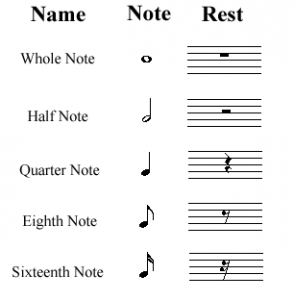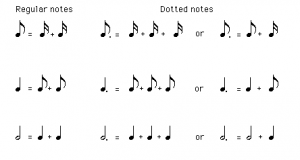Online Piano Lessons: Play Fur Elise – Lesson 5
Online Piano Lessons – How to Play Fur Elise – Lesson 5
Hello, hello, and hello! I hope that you are enjoying my online piano lessons so far.
Last week we began learning the second movement of Beethoven’s Fur Elise. If you are having more difficulty with this part of the song than you did with the first movement, do not worry. This part is definitely much harder. Just stick with it!
In today’s video lesson we will learn the next part of the second movement of Fur Elise. If you need to review the first part of the second movement, here is the link: Online Piano Lessons: How To Play Fur Elise – Lesson 4
And for your convenience, here are links to the three lessons that teach the first movement:
Online Piano Lessons: How To Play Fur Elise – Lesson 1
Online Piano Lessons: How To Play Fur Elise – Lesson 2
Online Piano Lessons: How To Play Fur Elise – Lesson 3
And you can watch me play the whole composition here: Online Piano Performance: Fur Elise.
Remember to rewind frequently until you internalize each part, and please put in about five minutes every single day with these videos.
Now let’s look at the second of the online piano lessons for the second movement of Fur Elise:
Some Theory
Once again, let’s move forward with learning to read the sheet music for Fur Elise.
If you want to purchase the sheet music for Fur Elise, you can click on the following link: Fur Elise sheet music.
Here is a transcription of part of the second movement of Fur Elise.
To review, see if you can pick out the eighth notes, sixteenth notes, and thirty-second notes in this transcription. Note that there are also some dotted sixteenth notes – what is the duration of these notes?
The first measure has a rest. What is the duration of this rest?
What is the total duration of one of the above measures? Make sure that this duration matches the time signature of the piece – remember that the time signature for Fur Elise is 3/8.
And what are those curved lines above some of the notes in the third and fourth measures? How are the notes under those curved lines supposed to be played?
In the first measure, some of the notes on the treble staff have dots under them, and some of the notes in the bass staff have dots over them. What do these dots mean?
If you are having trouble answering any of these questions, you can easily review this information in previous lessons.
Music Note Durations
Let’s take a look at the most common music note durations.
In the picture on the left there are several notes and rests that we have talked about, and a few that we have not.
One of the reasons we have not seen any whole notes or half notes is because of the time signature that Fur Elise is written in. A half note has the same duration as four eighth notes (because 4/8 = 1/2). But in a 3/8 time signature, a measure only consists of three eighth notes.
Similarly, a whole note would require the same duration as eight eighth notes (because 8/8 = 1 whole).
We have seen a few quarter notes. Can you find the one in the transcription above? That’s right – it’s in the second measure.
We have also already seen many eighth and sixteenth notes, as well as the corresponding rests.
An eighth note has one flag and a sixteenth note has two flags. Last week we also discussed thirty-second notes. A thirty-second note would have three flags.
Note that we have also seen a lot of beamed notes. In fact, we only saw a thirty-second note with an extra partial beam attached to a sixteenth note, like the one in the following picture.
In the last two posts we also discussed dotted notes. Recall that placing a dot to the right of a note increases the duration of the note by half its value. Here are a few examples:
Note, for example, that an eighth note has the same duration as two sixteenth notes. So a dot next to an eighth note adds the duration of one additional sixteenth note. It follows that the duration of a dotted eighth note is 3/16.
Similarly, a quarter note has the same duration as two eighth notes. So a dot next to a quarter note adds the duration of one additional eighth note. It follows that the duration of a dotted quarter note is 3/4.
Note that 3/4 = 6/8. But a measure of Fur Elise has only the duration of three eighth notes. So in this song, a dotted quarter note would last longer than a measure.
As an exercise, add dotted sixteenth notes and dotted thirty-second notes to the above chart. And just for fun, throw in a dotted sixty-fourth note as well!
Well that is all for today. Continue practicing this part of the second movement of Fur Elise throughout this week.
If you are interested in a more formal system of learning how to play the piano you may want to read my review of the PianoForAll system here: PianoForAll review
Until next week…
~ Steve




